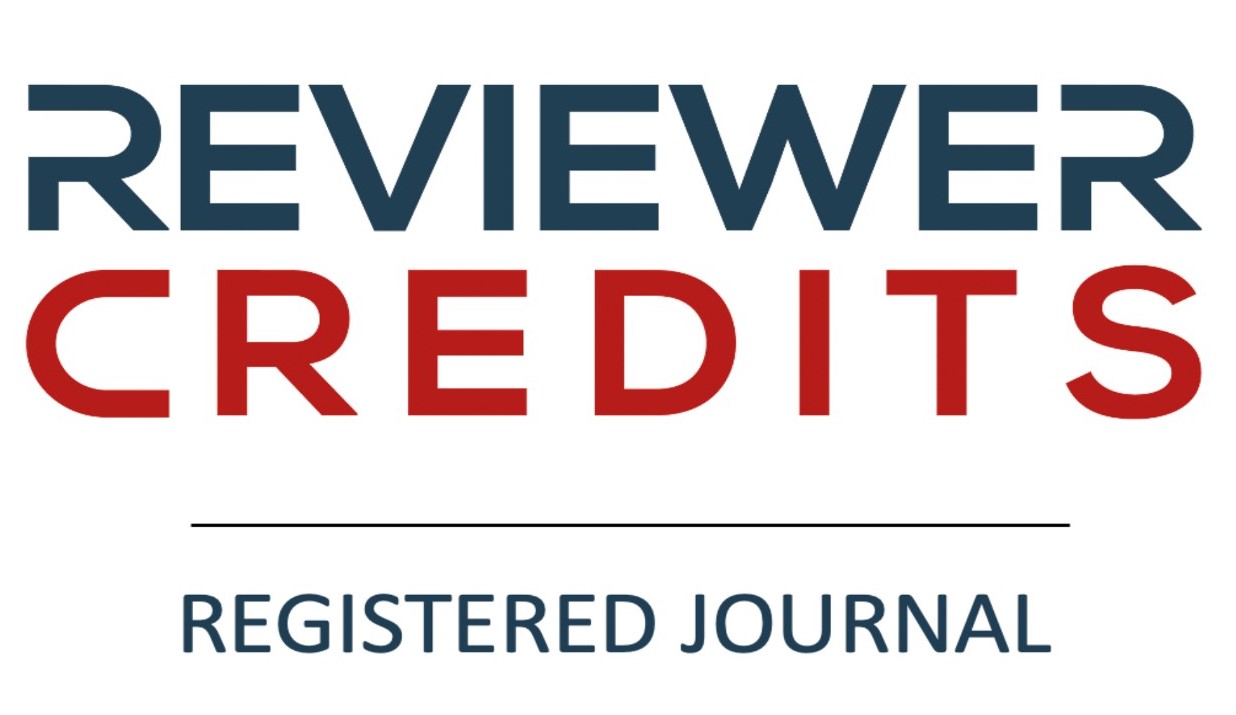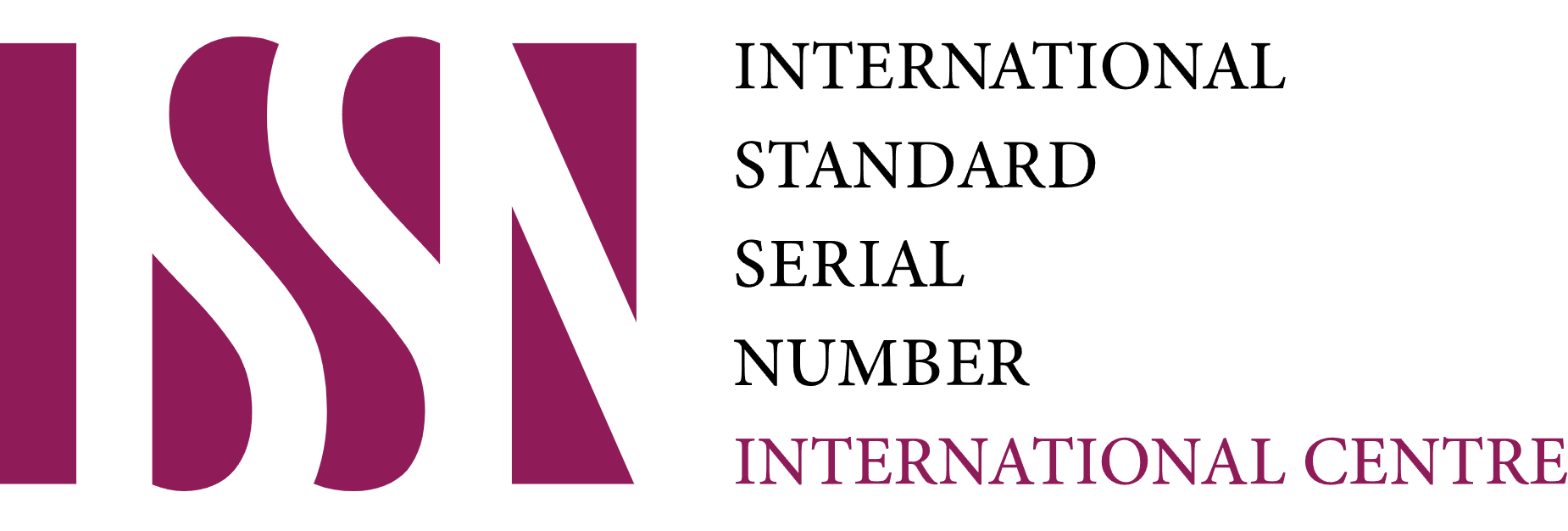Petani Maju Sebagai Agen Pembangunan Pertanian
DOI:
https://doi.org/10.51852/jpp.v19i2.769Keywords:
agent of change, extension farmer, , progressive farmersAbstract
Penyuluh swadaya yang berasal dari petani maju hadir karena adanya tuntutan pendekatan partisipatori agar petani dapat menjadi subjek dalam program pembangunan pertanian mulai dari tahap mengidentifikasi masalah, merencanakan, melaksanakan hingga tahap mengevaluasinya. Petani maju memiliki keunggulan dalam melaksanakan perannya sebagai agen perubahan di perdesaan karena bagian dari komunitasnya dan lebih dipercaya oleh sesama petani. Tulisan ini merupakan hasil telaah dan kajian yang bertujuan memaparkan konsep tentang petani maju dapat menjadi penyuluh swadaya dan memiliki kemampuan untuk mewujudkan penyuluhan dari petani ke petani. Selain sebagai pembantu penyuluh, petani maju sebagai penyuluh swadaya juga menjadi pelaku aktif dalam konsep metode belajar dari petani ke petani. Optimalisasi peran petani maju sebagai penyuluh swadaya dalam mendorong percepatan regenerasi petani menjadi salah satu solusi dalam menyusun road map pengembangan agropreneur muda. Hal ini telah terbukti bahwa petani maju sebagai penyuluh swadaya mampu berperan dalam menyebarkan teknologi tradisional berbasis kearifan lokal, menjadi pemimpin informal dan mampu bersinergi dengan sesama petani dalam mendorong pembangunan pertanian di pedesaan. Petani maju memiliki kecenderungan kapabilitas menjadi penyuluh swadaya sebagai penggerak penyuluhan dari petani ke petani. Upaya untuk mewujudkan hal tersebut dapat dilakukan melalui peningkatan kapasitas penyuluh swadaya dalam hal mengorganisasikan dan memandirikan petani sehingga paradigma penyuluhan yang partisipatori dan meninggalkan pola lama pemerintah (top down) dapat terwujud.
References
Agussabti (2002) Kemandirian petani dalam pengambilan keputusan adopsi inovasi: Kasus Petani Sayuran di Provinsi Jawa Barat. IPB.
Anwarudin O dan. Haryanto, Y. (2016) Peran penyuluh pertanian swadaya dalam memotivasi generasi muda pelaku pertanian. Laporan Penelitian. Bogor.
Arnstein, S.R. (1969) ‘A Ladder Of Citizen Participation. Journal of the American Institute of Planners’, Journal Of The American Institute Of Planners, 35(November 2012), pp. 37–41.
Asih, G.Y. and Pratiwi, M.M.S. (2010) ‘Perilaku Prososial Ditinjau Dari Empati Dan Kematangan Emosi’, Jurnal Psikologi Universitas Muria Kudus, I(1), pp. 33–42.
Bandura, A. (1978) ‘Social Learning Theory of Aggression’, Journal of Communication, pp. 12–29. Available at: https://doi.org/10.1111/j.1460-2466.1978.tb01621.x.
Batson, C.D. (2010) ‘Empathy-induced altruistic motivation.’, Prosocial motives, emotions, and behavior: The better angels of our nature., pp. 15–34. Available at: https://doi.org/10.1037/12061-001.
Blauert, J. Quintanar, E. (1997) ‘Seeking Local Indicators: Participatory Stakeholder Evaluation of Farmer-to-Farmer Projects’, Proceedings of World Wide Fund (WWF), 29, pp. 1–17.
Braun, AR. Hocde, H. (2000) ‘Farmer Participatory Research in Latin America: Four Cases’, Journal ACIAR, 95(1), pp. 32–53.
Brown, K. and Westaway, E. (2011) ‘Agency, Capacity, and Resilience to Environmental Change: Lessons from Human Development, Well-Being, and Disasters’, Annual Review of Environment and Resources, 36(1), pp. 321–342. Available at: https://doi.org/10.1146/annurev-environ-052610-092905.
David S (2007) ‘Learning to Think for Ourselves: Knowledge Improvement and Social Benefits among Farmer Field School Participants in Cameroon’, Journal of International Agricultural and Extension Education, 14(2), pp. 35–49.
Davis, K. et al. (2009) ‘Institutional changes and challenges for agricultural advisory services in Africa’, in Theory and practice of advisory work in a time of turbulences. XIX European Seminar on Extension Education, 15-19 September 2009, Assisi, Italy.
Dayat, D. Anwarudin, O. (2020) ‘The effect of entrepreneurship capacity on sustainability of young farmers agribusiness.’, Journal of the Social Sciences, 23(123–134).
Dovidio, J. Piliavin, F. Schroeder, JA. Penner, L. (2006) he social psychology of prosocial behavior. Mahwah (US): Lawrence Erlbaum Associates.
Downey, M., Parslow, S. and Smart, M. (2011) ‘The hidden treasure in nursing leadership: Informal leaders’, Journal of Nursing Management, 19(4), pp. 517–521. Available at: https://doi.org/10.1111/j.1365-2834.2011.01253.x.
Dwi Haryati, T. (2013) ‘Kematangan Emosi, Religiusitas Dan Perilaku Prososial Perawat Di Rumah Sakit’, Persona:Jurnal Psikologi Indonesia, 2(2), pp. 162–172. Available at: https://doi.org/10.30996/persona.v2i2.109.
Eisenberg, N. (1991) ‘Values, Sympathy, and Individual Differences: Toward a Pluralism of Factors Influencing Altruism and Empathy’, Journal Psychological Inquiry, 2(2), pp. 128–131.
Fatchiya A (2010) ‘Tingkat Kapasitas Pembudidaya Ikan dalam Mengelola Usaha Aquakultur secara Berkelanjutan’, Penyuluhan, 6(1), pp. 11–18.
Haryanto, Y. et al. (2018a) ‘Efektivitas Peran Penyuluh Swadaya dalam Pemberdayaan Petani di Jawa Barat’, Jurnal Pengkajian dan Pengembangan Teknologi Pertanian, 20(2), pp. 142–154. Available at: https://doi.org/10.21082/jpptp.v20n2.2017.p141-154.
Haryanto, Y. et al. (2018b) ‘Farmer to Farmer Extension Through Strengthening Progressive Farmers Role’, International Journal of Progressive Sciences and Technologies (IJPSAT), 6(2), pp. 228–234.
Haryanto, Y. (2018) Penguatan Kapasitas dan Kemandirian Tokoh Petani Maju sebagai Penyuluh Swadaya. IPB.
Haryanto, Y. et al. (2020) ‘Factors Affecting the Capacity and the Interdependence of Progressive Farmers in West Java Indonesia’, Jurnal Penyuluhan, 16(1), pp. 106–121. Available at: https://doi.org/10.25015/16202026770.
Haryanto, Y. Anwarudin, O. (2021) ‘Analisis Pemenuhan Informasi Teknologi Penyuluh Swadaya di Jawa Barat’, Jurnal Triton, 12(2), pp. 79–91. Available at: https://doi.org/10.47687/jt.v12i2.213.
Haryanto, Y., Anwarudin, O. and Yuniarti, W. (2021) ‘Progressive Farmers As Catalysts for Regeneration in Rural Areas Through Farmer To Farmer Extension Approach’, Plant Archives, 21(no 1), pp. 867–874. Available at: https://doi.org/10.51470/plantarchives.2021.v21.no1.120.
Haryanto, Y. and Suyadi (2021) ‘Peran Kepemimpinan Tokoh Informal terhadap Kemandirian Pemuda Sekitar Hutan di Kabupaten Bogor’, JPM (Jurnal Pemberdayaan Masyarakat), 6(2), pp. 687–694. Available at: https://doi.org/10.21067/jpm.v6i2.5434.
Haryanto, Y. and Yuniarti, W. (2017) ‘The Role of Farmer to Farmer Extension for Rice Farmer Independence in Bogor’, International Journal of Research in Social Sciences, 7(4), pp. 62–74.
Hellin, J. and Dixon, J. (2008) ‘Operationalising participatory research and farmer-to-farmer extension: The Kamayoq in Peru’, Development in Practice, 18(4–5), pp. 627–632. Available at: https://doi.org/10.1080/09614520802181889.
Indraningsih, K.S. et al. (2010) ‘Performance of Extension Workers from Farmer ’ s Perspective and The Existence of Self-Support Extension Agents as Counterpart of Agricultural Extension Workers’, Analisis Kebijakan Pertanian, 8(1), pp. 303–321.
Indraningsih, K.S. et al. (2016) ‘Kinerja Penyuluh dari Perspektif Petani dan Eksistensi Penyuluh Swadaya
Sebagai Pendamping Penyuluh Pertanian’, Analisis Kebijakan Pertanian, 8(4), pp. 303–321. Available at: https://doi.org/10.21082/akp.v8n4.2010.303-321.
Kahana, E. et al. (2013) ‘Altruism, helping, and volunteering: Pathways to well-being in late life’, Journal of Aging and Health, 25(1), pp. 159–187. Available at: https://doi.org/10.1177/0898264312469665.
Kahana, E Kahana, B. (2003) ‘Patient proactivity enhancing doctor–patient– family communication in cancer prevention and care among the aged’, Journal Patient Education and Counseling, 50(1), pp. 67–73.
Kiptot, E. et al. (2006) ‘Sharing seed and knowledge: Farmer to farmer dissemination of agroforestry technologies in western Kenya’, Agroforestry Systems, 68(3), pp. 167–179. Available at: https://doi.org/10.1007/s10457-006-9007-8.
Kiptot, E. and Franzel, S. (2014a) ‘Voluntarism as an investment in human, social and financial capital: Evidence from a farmer-to-farmer extension program in Kenya’, Agriculture and Human Values [Preprint]. Available at: https://doi.org/10.1007/s10460-013-9463-5.
Kiptot, E. and Franzel, S. (2014b) ‘Voluntarism as an investment in human, social and financial capital: Evidence from a farmer-to-farmer extension program in Kenya’, Agriculture and Human Values, 31(2), pp. 231–243. Available at: https://doi.org/10.1007/s10460-013-9463-5.
Kumar Shrestha, S. (2014) ‘Decentralizing the Farmer-to-Farmer extension approach to the local level’, World Journal of Science, Technology and Sustainable Development, 11(1), pp. 66–77. Available at: https://doi.org/10.1108/wjstsd-08-2013-0028.
Leeuwis C. & van den Ban (2004) Communication for Rural Innovation. Rethinking Agricultural Extension 3rd ed. Oxford (UK): Blackwell Publishing.
Lippitt (1958) Planned Change: A Comparative Study of Principles and Techniques. New York (US): Harcourt, Brace & World, Inc.
Lukuyu, B. et al. (2012) ‘Disseminating Improved Practices: Are Volunteer Farmer Trainers Effective?’, Journal of Agricultural Education and Extension [Preprint]. Available at: https://doi.org/10.1080/1389224X.2012.707066.
Lukuyu, B. (2012) ‘The Journal of Agricultural Education Disseminating Improved Practices : Are Volunteer Farmer Trainers Effective ? Disseminating Improved Practices : Are Volunteer Farmer Trainers Effective ?’, (October), pp. 37–41.
Marliati, M. et al. (2008) ‘FAKTOR-FAKTOR PENENTU PENINGKATAN KINERJA PENYULUH PERTANIAN DALAM MEMBERDAYAKAN PETANI (Kasus di Kabupaten Kampar Provinsi Riau)’, Jurnal Penyuluhan, 4(2). Available at: https://doi.org/10.25015/penyuluhan.v4i2.2174.
Marsh, S. and Pannell, D. (1998) ‘The changing relationship between private and public sector agricultural extension in Australia’, Rural Society, 8(2), pp. 133–151. Available at: https://doi.org/10.5172/rsj.8.2.133.
Mulanda, J. Mwenya, E. Namalambo, E. (1999) ‘Draught Animal Power: Experiences of Farmer Training in the Northern Communal Areas of Namibia’, Proceedings of an ATNESA Workshop [Preprint].
Nakano, Y. et al. (2018) ‘Is farmer-to-farmer extension effective? The impact of training on technology adoption and rice farming productivity in Tanzania’, World Development, 105, pp. 336–351. Available at:
https://doi.org/10.1016/j.worlddev.2017.12.013.
Neubert, M.J. and Taggar, S. (2004) ‘Pathways to informal leadership: The moderating role of gender on the relationship of individual differences and team member network centrality to informal leadership emergence’, Leadership Quarterly, 15(2), pp. 175–194. Available at: https://doi.org/10.1016/j.leaqua.2004.02.006.
Noordin, Q. Niang, A. Jama, B. Nyasimi, M. (2001) ‘Scaling Up Adoption and Impact of Agroforestry Technologies: Experiences from Western Kenya’, Journal Development in Practice, 11(1), pp. 509–523.
Parker, S. (1998) ‘Enhancing role breadth self-efficacy: The roles of job enrichment and other organizational interventions’, Journal of Applied Psychology, 83(6), pp. 835–852.
Pradiana, W, Anwarudin, O, Maryani, A. (2020) ‘Determining factors of the development of agricultural extension office as a knot for coordinating agricultural development.’, International Journal of Scientific & Technology Research, 9(3), pp. 3766–3733.
Pretty, J.N. (1995) ‘Participatory learning for sustainable agriculture’, World Development, 23(8), pp. 1247–1263. Available at: https://doi.org/10.1016/0305-750X(95)00046-F.
Putri, C.A., Anwarudin, O. and Sulistyowati, D. (2019) ‘Partisipasi Petani Dalam Kegiatan Penyuluhan Dan Adopsi Pemupukan Padi Sawah Di Kecamatan Kersamanah Kabupaten Garut’, Jurnal Agribisnis Terpadu, 12(1), p. 103. Available at: https://doi.org/10.33512/jat.v12i1.5538.
Rhoades, R.E. and Booth, R.H. (1982) ‘Farmer-back-to-farmer: A model for generating acceptable agricultural technology’, Agricultural Administration, 11(2), pp. 127–137. Available at: https://doi.org/10.1016/0309-586X(82)90056-5.
Riana, Satria, A. and Purnaningsih, N. (2015) ‘The Role of Self-Support Extension Agents in Supporting Intensification Cocoa in Sigi District Central Sulawesi’, Jurnal Penyuluhan, 11(2), pp. 201–211.
Richards, G. (2010) Psychology. Yogyakarta (ID): Pustaka Baca.
Rogers, E.M. (2003) Diffusion of Innovations. Fifth Edition. New York (US): The Free Press.
Samuel ZB, K.A. and G.J. (2012) ‘Promoting community-based extension agents as an alternative approach to formal agricultural extension service delivery in Northern Ghana’, Asian Journal of Agriculture and Rural Development, 2(1), pp. 76–95.
Scarborough V. Killough S. Johnson DA. Farrington J (1997) Farmer led Extension: Concepts and Practices. London (UK): Published by Intermediate Technology Publications.
Selener D, J. Chenier, R.Z. (1997) Farmer to Farmer Extension lessons from the field. New York: IIRR.
Shelton, D.P. et al. (2009) ‘Farmlink: Promoting conservation buffers farmer-to-farmer’, Agroforestry Systems, 75(1), pp. 83–89. Available at: https://doi.org/10.1007/s10457-008-9130-9.
Subejo (2009) Revolusi Hijau dan Penyuluhan Pertanian. Tokyo: Indonesian Agricultural Sciences Association. Available at: www.iasa-pusat.org/artikel/revolusihijau-dan-penyuluhan-pertanian.html.
Sumardjo (1999) ‘Transformasi model penyuluhan pertanian menuju pengembangan kemandirian petani (Kasus di Propinsi Jawa Barat) [disertasi]’, pp. 1–372.
Syahyuti, N. (2016a) ‘Peran Strategis Penyuluh Swadaya dalam Paradigma Baru Penyuluhan Pertanian Indonesia’, Forum penelitian Agro Ekonomi, 32(1), p. 43. Available at:
https://doi.org/10.21082/fae.v32n1.2014.43-58.
Syahyuti, N. (2016b) ‘Peran Strategis Penyuluh Swadaya dalam Paradigma Baru Penyuluhan Pertanian Indonesia’, Forum penelitian Agro Ekonomi, 32(1), p. 43. Available at: https://doi.org/10.21082/fae.v32n1.2014.43-58.
Taylor, S. (1997) Social Psychology. New Jersey (US): Prentice-Hall.
Tjitropranoto, P. (2003) ‘Penyuluh Pertanian: Masa Kini dan Masa Depan.’, in Membentuk Pola Perilaku Manusia Pembangunan. Bogor (ID): IPB.
Watson, J.B. (1994) ‘Watson_Psychology_as_the_Behaviorist_Vie’, (2), pp. 248–253.
Yuliani, S.S. and , Munandar Sulaeman, dan S.W. (2012) ‘Hubungan Antara Karakteristik Penyuluh Swadaya dengan Motivasi Peternak Sapi Perah’, Jurnal Unpad, 1.
Yumi. Sumardjo. Darwis, SG. Sugihen, B. (2012) ‘Model pengembangan pembelajaran petani dalam pengelolaan hutan rakyat lestari (Kasus di Kabupaten Gunung Kidul, Provinsi Daerah Istimewa Yogyakarta dan Kabupaten Wonogiri, Provinsi Jawa Tengah)’, Penyuluhan, 8(2), pp. 17–27.
Downloads
Published
Issue
Section
License
Authors who publish with this journal agree to the following terms:
1. Copyright on any article is retained by the author(s).
2. The author grants the journal, right of first publication with the work simultaneously licensed under a Creative Commons Attribution License that allows others to share the work with an acknowledgment of the works authorship and initial publication in this journal.
3. Authors are able to enter into separate, additional contractual arrangements for the non-exclusive distribution of the journals published version of the work (e.g., post it to an institutional repository or publish it in a book), with an acknowledgment of its initial publication in this journal.
4. Authors are permitted and encouraged to post their work online (e.g., in institutional repositories or on their website) prior to and during the submission process, as it can lead to productive exchanges, as well as earlier and greater citation of published work.
5. The article and any associated published material is distributed under the Creative Commons Attribution-ShareAlike 4.0 International License













